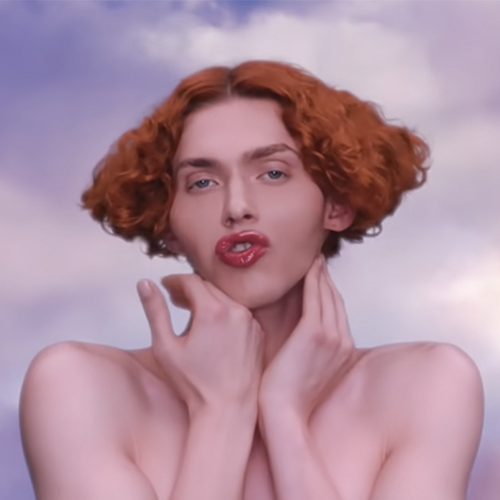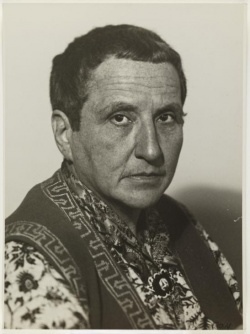
Investigating Transgender Art
By Charly Ros
From an early age, I felt connected with making some type of art. First, it was painting with watercolors, experimenting with it at the dinner table. When I started primary school, I learned how to shape clay, how to knit and crochet, and of course how to utilize crayons in the messiest way possible. Art was the catalyst to my identity. It was the one interest that my parents encouraged, and through it I was able to turn off reality for a while. It was mine. It helped me through bad moments in life. I would draw trees to comfort myself, and no pun intended, that was a rooting practice. No matter who I was, or who I would be, I would always have my art. When I moved to Berlin, I connected with other people who also explored their identity, their transness through art. They performed, painted, and made magazines. I participated in some of these activities too, but I was too shy to consider myself an actual artist (whatever that may mean).
The moment I turned 19, I decided to leave Germany (where my parents live) and pursue higher education. At first I wanted to do something in the social sciences, but after two years, I realized that my identity and experiences connect best with creative practices. So, I applied for art schools in the Netherlands and got accepted. Being a non-binary transgender artist in my school is difficult. Often, I don’t see my experiences reflected in art history and in the language around me. The images are being described in a binary way, and I have to fight to get my pronouns respected. Because I didn’t connect with people so much at school, I became more active on Instagram. If you want to hear more about my experiences there, check out the podcast by trans magazine that I am on. Because I didn’t connect with people so much at school, I became more active on Instagram.
Here, I found a vibrant and diverse queer art community; lots of interesting illustrations, videos, performances, you name it. I wouldn’t go as far as to think I’m an amazing artist, but I am a queer artist that is part of that community. And that gives me a lot of happiness because I’m just one of many queer artists, doing their own thing and for once not standing out as I used to. It can feel isolating to be a transgender artist, as art schools often don’t reflect this community well. The downside of having so many artists on Instagram is that I can’t always interact with others extensively like I would in real life. Often it means just liking posts, writing short comments, and sending memes to each other. I want to get to know those transgender artists who are part of my community, that follow me and create beautiful things. People around me share their art on social media such as Instagram and it gets some recognition, but I also want to make it possible for them to be seen in a magazine article, be it on a blog or on glossy paper. This is how I developed the idea of a spotlight-style article.
I want to talk to transgender artists, show their artworks and faces and I want to learn more about them and their way of working. What inspires them, what is difficult for them and what brings them joy. I want to learn how their intersecting identities influence what they create and how they create. I also hope to learn more about myself, as I’m trying to understand my own art in the context of the wider community and the art world itself. Where and how does my art fit in? Maybe I can answer it in the end.

Queer people (meaning people who do not fit into cisgender-heterosexual norms) making art and being openly queer is not a new thing. There have been queers like Freddie Mercury, David Wojnarowicz, Gertrude Stein, and Tamara De Lempicka. In fact, if you look close enough, you will find artists who were queer but did not or were not able to express it clearly in their art, because of personal preference or societal pressures.
I tried to find out more about the history of transgender artists, but I hit a roadblock. Somehow this is so much harder than finding gay artists. One reason could be that the term transgender and crossdresser have been used interchangeably in texts. Another reason would be the inequalities that cis women faced and therefore decided to present as men to the public. The term transgender was first coined in 1965 (by a psychologist) and later adopted by the community for themselves.
Today, many artists proudly call themselves transgender. If you google “transgender artist” you get over 38 million results. But before we go on and interview some of them, I want to consider the following
In what way do transgender artists differ from cisgender artists. How do they do in the art world? Is there such a thing as “trans art”? What makes art trans? Do transgender artists create art different from cisgender artists?
I asked these questions in the TRANS magazine community. One response I’ve received was from Ezra, a trans man who is a modern/classical dancer. In his email he says, “Personally, I think that transgender artists do differ from cisgender artists because these groups often look at the world differently. When I look around me, I see that with other trans individuals it is it is much more about how they present themselves to the outside world and cis people more about how the outside world presents itself to them. Basically, a little bit in reverse.”
Another response was from Nova, a trans woman and visual artist. On Instagram she said, “A transgender artist who is true to their nature is a disruptive force of anarchy, in ways that cisgender artists simply cannot, because they never had to break out of the most fundamental box society puts us in.”
I felt that both emphasized the fact that transgender artists look at the world differently: they defy expectations. I feel this is part of the beauty of being a transgender artist.
I feel excited to talk to more people during this interview series and see how they feel about this assumption.
